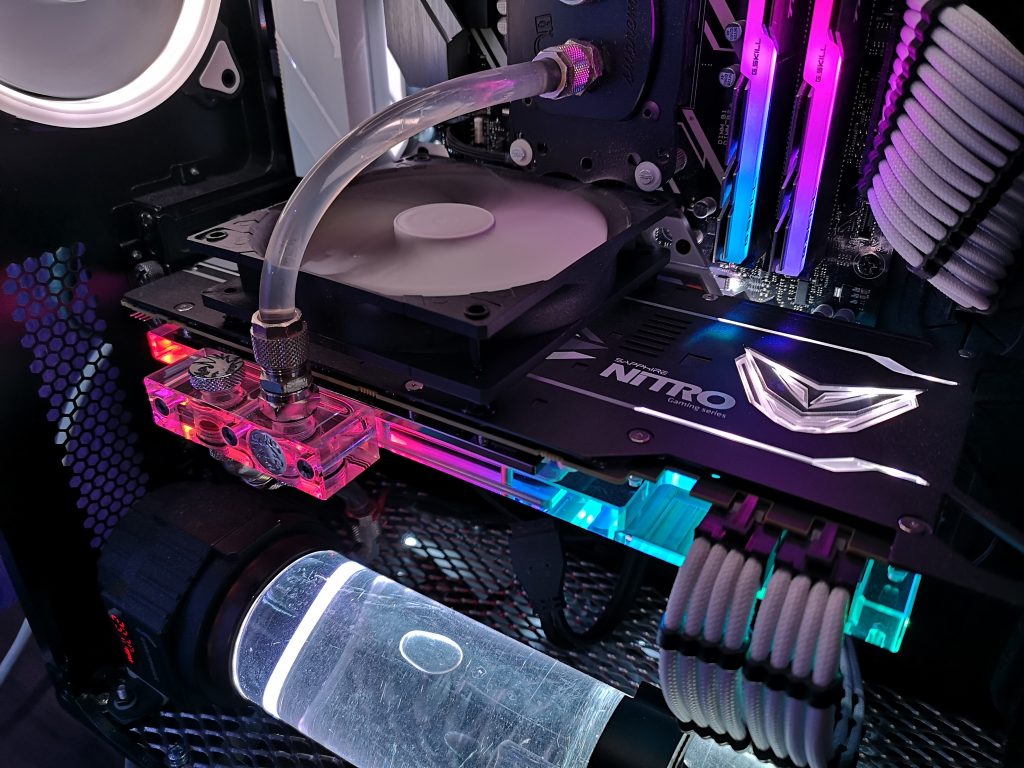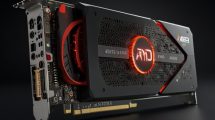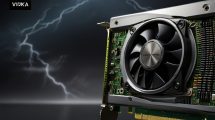In the summer of 2017, AMD introduced the GCN 5 alias “Vega” graphics cards, which, after some delay, were finally intended to knock Nvidia’s fast and economical Pascal cards off the throne. Despite the nearly 500 mm2 chip and a 2048-bit wide HBM2 memory interface, the attack failed miserably. The cards were very power-hungry and the reference cards with blower coolers hardly mastered the enormous waste heat. Constantly running into the temperature and/or power limit and throttling itself as a consequence, Vega could not retrieve the actual potential and was branded a disappointment by many testers.
With elaborate coolers, the board partners were able to tame the temperatures of their custom cards and get a grip on the volume, but the large energy requirement still formed an extremely bland aftertaste. The extraordinary memory, the AMD-exclusive freesync and other exciting technologies made the cards interesting for quite a few users. In the end, Vega found a fan base that dealt with the peculiarities of architecture. Soon the conclusion was reached: Undervolting is the key to success. In this article, I want to document the effects of undervolting from an end user’s perspective and find out if the whole thing is worth it or not.
Important preliminary remarks
It should be noted that the settings shown later are not necessarily the same on all Vega graphics cards. Low voltages can cause game and driver crashes and general system instability. Raising the power limit by 100% (for maximum overclocking) requires manipulating the Power Play Table and can overwhelm the factory cooling system. Therefore, the taking over of the displayed settings is at your own responsibility and I do not accept any liability for any damages that may occur. All of the values listed below relate only to the test system used and may differ significantly from those of other systems. The measurements were not carried out in a controlled test environment with constant room and water temperatures, and I mainly use software tools that do not provide 100% accurate data to read out.
Basic
What is this undervoltage that everyone is talking about now? In order to answer this question, a basic physical law must first be explained. In simple terms, the power consumption of an ele[Watt]ctrical device is calculated by multiplyi[Volt]ng the voltage by[Ampere] the current. Obviously, the power consumption can be reduced by reducing one of these two factors (voltage or current). As a rule, as “simple users” in the appropriate drivers and tools, we only have an influence on GPU voltage.
Specifically, this is 1.2 V (= 1200 mV) ex works for Vega. One could start to calculate now, but in practice the results ultimately deviate somewhat from the theory, because other factors also influence the actual result. Therefore, only one thing helps: setting and measuring. As already noted in the disclaimer, I do not have any professional measuring tools at my disposal. However, you can also get a rough overview with the simple measuring instrument from the diy store.
| Cpu | AMD Ryzen 7 1700X (4.0GHz x 1.3V) with EK Supreme Acetal water cooler |
| Board | ASUS Prime X470 Pro (Bios 5406 with AGESA 1.0.0.4) |
| Memory | 16GB G.Skill F4-3200C14D-GTZR x 3400MHz 14-14-14-34 |
| Gpu | Sapphire RX Vega 64 Nitro with Bykski SP-VEGA64-X Water Cooler |
| Cooling | Open Loop, 240mm+360mm Alphacool Radiators, 5xNoctua P12 Redux en 750 rpm |
| Ssd | Samsung 970 Evo 512GB |
| PSU | Seasonic Focus+ Gold 850W |
| OS / Driver | Windows 10 1909 / Radeon Software 19.12.2 |
| Monitoring | MSI Afterburner 4.5.0 + RTSS 7.1.0 and HWinfo 6.20 |
| Gauge | Globaltronics GT-PM-07 |
































Kommentieren